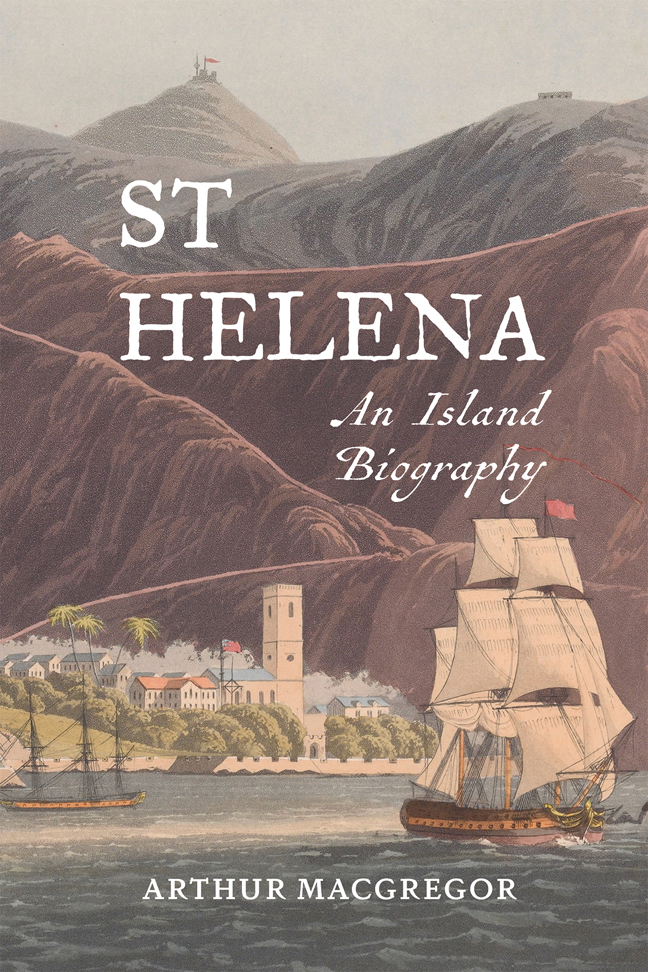Book contents
- Frontmatter
- Contents
- List of Illustrations
- Photo credits
- Preface
- Acknowledgements
- 1 Genesis
- 2 The breach: Europe and St Helena collide
- 3 Population and environment: early impacts
- 4 Population and environment: asserting control
- 5 ‘The citadel of the South Atlantic’
- 6 Scientists in transit: St Helena as a site for scientific investigation
- 7 Napoleon on St Helena
- 8 Later detainees, 1800s and 1900s
- 9 A place in the modern world
- Appendix: Governors of St Helena
- Bibliography
- Index
5 - ‘The citadel of the South Atlantic’
Published online by Cambridge University Press: 21 February 2024
- Frontmatter
- Contents
- List of Illustrations
- Photo credits
- Preface
- Acknowledgements
- 1 Genesis
- 2 The breach: Europe and St Helena collide
- 3 Population and environment: early impacts
- 4 Population and environment: asserting control
- 5 ‘The citadel of the South Atlantic’
- 6 Scientists in transit: St Helena as a site for scientific investigation
- 7 Napoleon on St Helena
- 8 Later detainees, 1800s and 1900s
- 9 A place in the modern world
- Appendix: Governors of St Helena
- Bibliography
- Index
Summary
The towering impregnability of St Helena impresses itself upon every seaborne visitor to the island, any weaknesses in its natural defences having been buttressed over the centuries by successive campaigns of fortification by the East India Company and later garrisons. William Webster characterized it (somewhat whimsically) in 1829, shortly before it passed from Company control, as follows:
here art vies with Nature's grandest efforts; fortresses with their turrets and cannon bristle on every point and pinnacle of rock. In fact, the position, the strength and number of the fortified points, appear to denote that the ambition of its possessors would render it the citadel of the world. A more military station I know not, for it far surpasses Gibraltar, and one naturally asks himself, whence is all this solicitude, this unnecessary zeal, and overweening anxiety for its security? – whence the advantage of being safely caged in this island while the sovereignty of the sea confers on it immunity from danger? and when that is lost to us, of what importance or value could be such a rock as this? Such, however, were not the questions of those who planned the mighty works of St Helena.
British ‘sovereignty of the sea’ must have seemed as secure as the rock itself in Webster's day, but it had not always been so. Before the British established a permanent foothold on the island, visiting seamen evidently had no thought of fortifying it against each other, although they might occasionally have hauled their cannon on shore to provide covering fire for vessels riding at anchor off Chapel Valley. We hear of an altercation in 1625, when a Portuguese (or possibly Spanish) carrack was surprised at its moorings by the arrival of a Dutch ship: some of the cannon were immediately landed and succeeded in beating off the Dutch, whose vessel sank nearby the following day. Having salvaged a good deal of the contents and the fabric, the Portuguese constructed a breastwork on which the captured cannon were mounted and used to good effect when a Dutch fleet of six vessels arrived shortly afterwards and was successfully repulsed by the shore-based bombardment.
The Dutch had proclaimed their aim to fortify and populate the place in 1633, but never actually did so; with the transfer of their attentions to the Cape, it fell instead to the British to establish a permanent foothold there.
- Type
- Chapter
- Information
- St HelenaAn Island Biography, pp. 65 - 106Publisher: Boydell & BrewerPrint publication year: 2024

